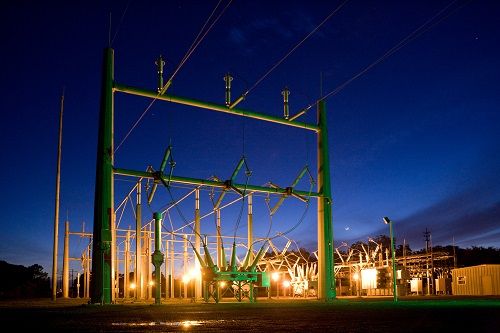Storage facilities are becoming increasingly important for implementing the energy transition. "They serve to relieve the strain on the weak power lines and to maintain constant capacity," says Markus W. Voigt, CEO of the aream Group. Storage facilities are still set up more as pilot projects, but as early as 2024, large, commercial storage facilities will be built. "These are the infrastructure for grid security and power supply, but also for new forms of electricity trading."
In view of the growing production capacities for renewable energies, there is no way around the rapid development of storage facilities. "The further development of grids and storage capacities is crucial - and must be prioritized more alongside the expansion of production," says Voigt. "The electricity produced must be available on demand." Other European countries are already further ahead in this area. "Spain, for example, already has its own storage strategy and could become a model for Germany," says Voigt.
Spain is the country with the fifth-largest electricity production in Europe - and a very high share of renewables at a good 56 percent. "However, Spain is very little integrated into the large European power grid," Voigt said. "Spanish governments of whatever color have therefore been quick to develop a strategy for building storage capacity." Accordingly, Spain will build 20 gigawatts of storage capacity by 2030, and 30 gigawatts by 2050. "These are enormous volumes that at a capacity of 60 GWh can then cover the needs of circa 17,500 households for a year," says Voigt.
In Germany, as Europe's largest electricity producer, the demand is significantly higher. "We assume that demand for storage is currently around 4.1 gigawatt hours," says Voigt. "This demand will increase to 104 gigawatt hours by 2030 and to more than 180 gigawatt hours by 2045." Battery storage systems are of particular commercial interest. "Currently, lithium-ion or lithium iron phosphate batteries are the best choice for the intended applications," Voigt says.
There are two applications in particular that currently show commercial potential: Frequency control services and trading. Frequency control services are the reserve used to compensate for fluctuations in the frequency of the power grid and to maintain a constant frequency of 50 Hz. It enables both the withdrawal of electricity and additional feed-in to the grid. "Especially for grid operators, such storage is important to be able to guarantee stability at all times," Voigt says.
Another possible use for storage is trading: "Renewable energies increase volatility on the spot market," says Voigt. "Battery storage systems use intraday trading to balance supply and demand and earn a margin." This is where a new form of power trading will emerge: Intraday traders who buy power when it's cheap and sell it when prices rise with demand. "Such transactions, and thus also the loading and unloading of storage facilities, can theoretically take place every minute in the process; realistically, a few times a day," says Voigt.
This form of electricity trading is currently still in its early stages, but could quickly become relevant. "Traders serve an important purpose with their storages by minimizing shortages and surpluses, and in this way they also reduce extreme price fluctuations," Voigt says. "The era of highly fluctuating electricity prices is coming to an end with this form of arbitrage."
PRESSEKONTAKT:
Leandra Kiebach
T: +49 (0)211 30 20 60 4-2
E: lk@aream.de
